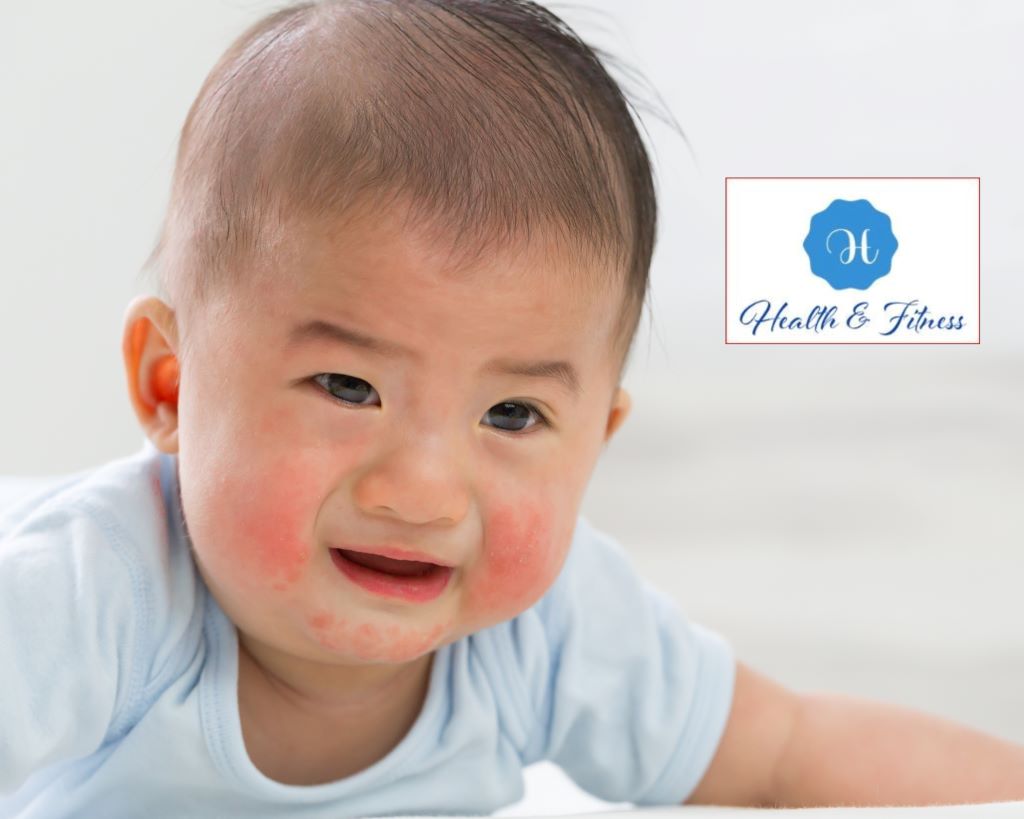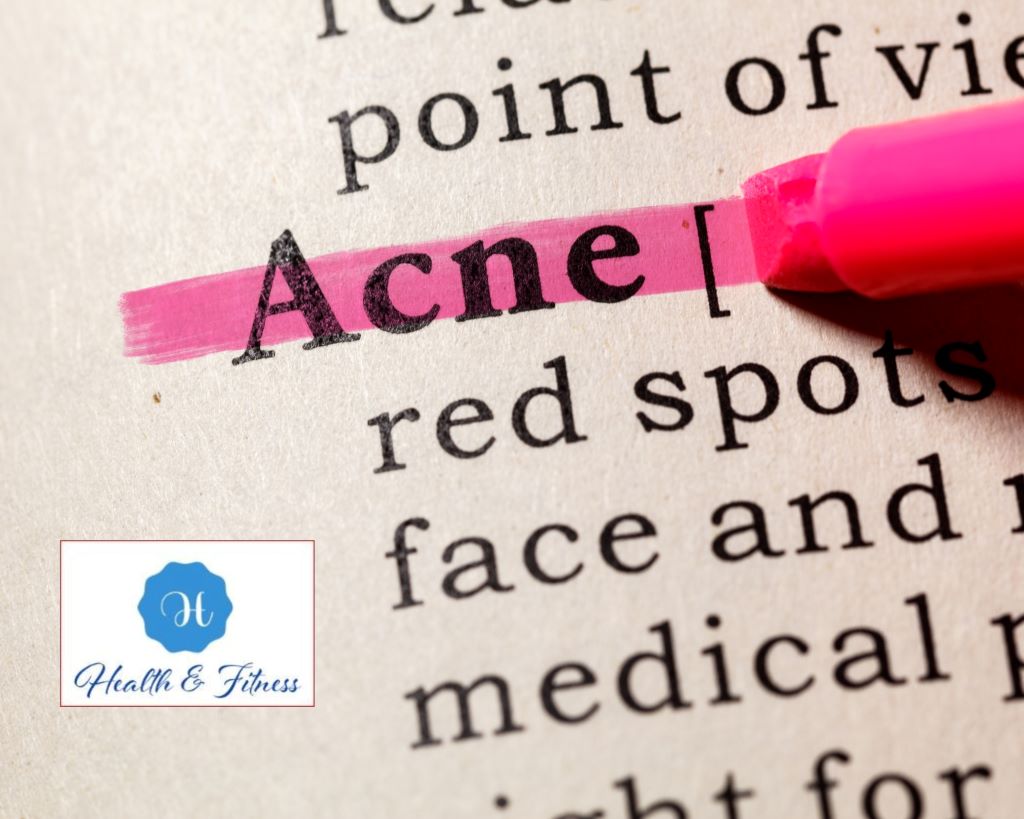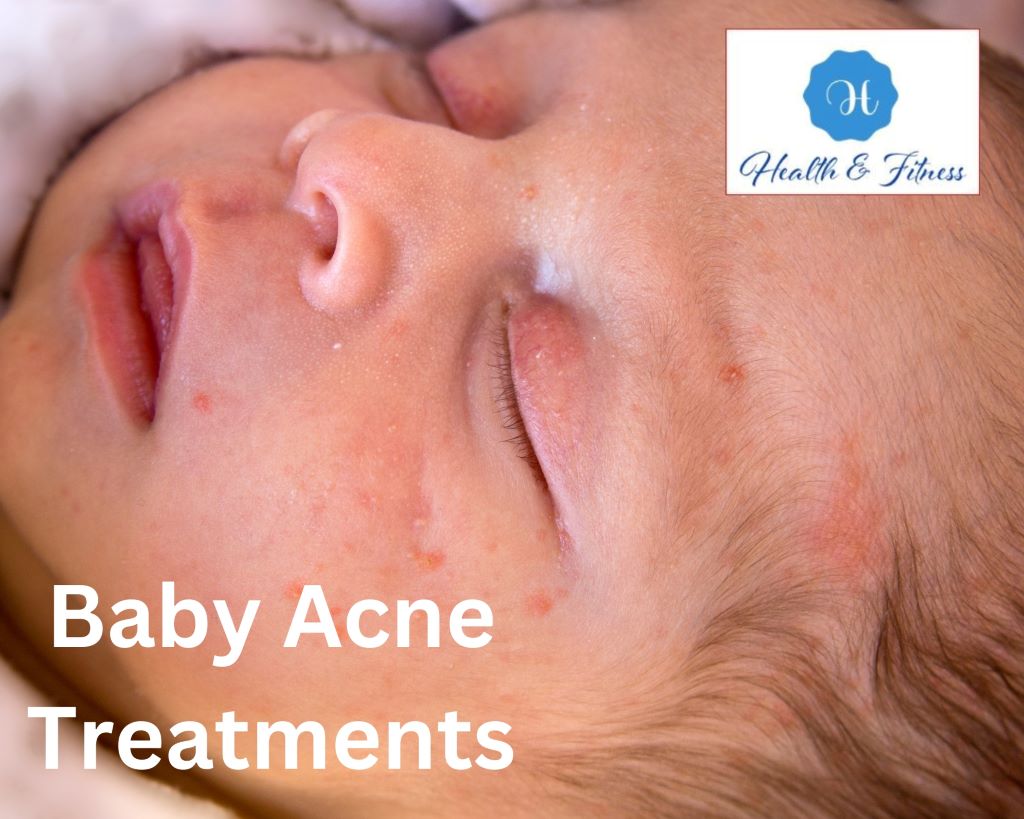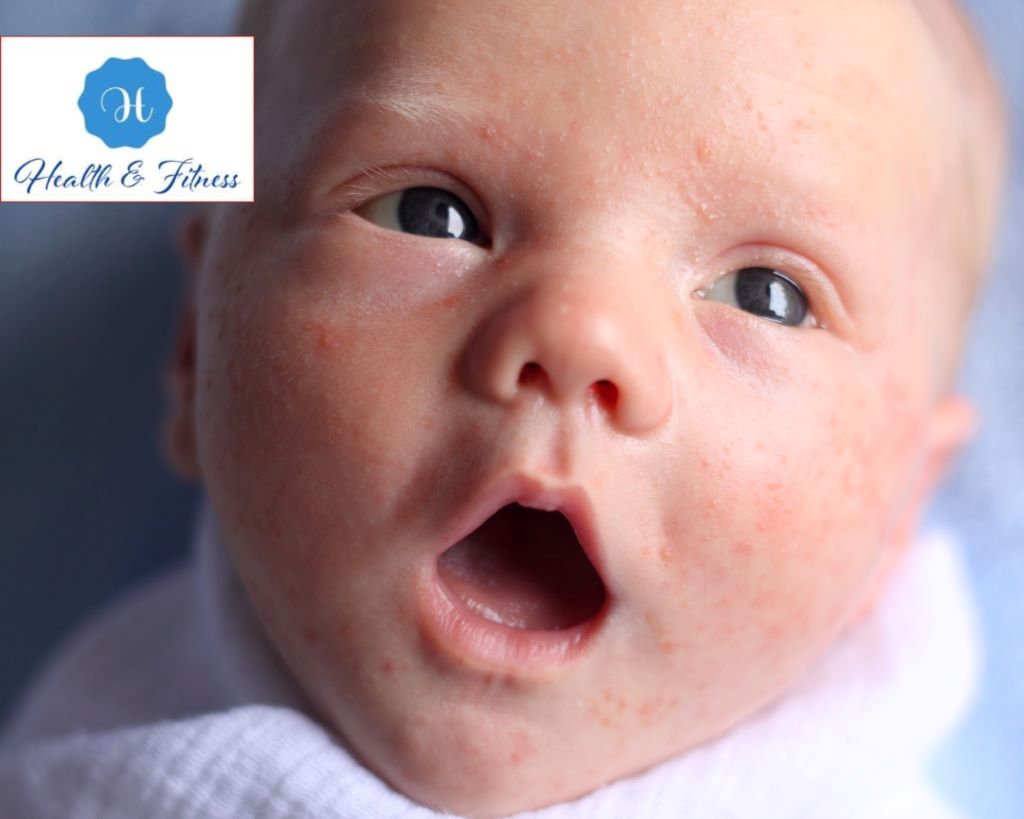Baby Acne: Causes and the Best Treatment Tips
Acne infants, also known as baby acne or neonatal acne, are a frequent form of acne that affects the skin of newborns and babies.
We also referred to it as “acne in infants.” Small red or white pimples appear on the face, most frequently on the cheeks, forehead, and chin, and are the defining characteristic of this condition. Some new parents may be worried about the condition, but most people think it’s harmless and will go away in only a few months. To make sure that your child’s skin is nice and healthy, do the following:
Knowing what can cause acne in babies and which treatments work best.
What exactly is acne in infants or baby acne?

Acne in babies and young children, also called “baby acne,” is a common skin problem. It appears on the face as raised, reddish, or white pimples, most commonly on the cheeks, forehead, and chin. It is not entirely clear what causes baby acne, but one theory suggests that we connect it to the hormonal shifts in a newborn’s body shortly after delivery.
The condition will usually improve on its own within a few weeks to a few months of being present. In the meantime, it is essential not to put harsh soaps or lotions on the baby’s skin. These products might irritate acne, which will cause the condition to become even more severe.
The Roots of Infant Acne or Baby Acne

Although the precise origin of newborn acne is not fully understood, it is generally accepted that it is associated with the hormonal shifts that occur in a baby’s body after delivery. The placenta is a conduit for transferring the mother’s hormones to the developing fetus while the woman carries her baby.
Soon after delivery, a baby’s body will begin producing its hormones, which may cause an increase in the amount of oil produced by the skin. This extra oil could block the pores, leading to acne in the long run. The transfer of germs from the mother’s skin to the baby’s skin during birth is another factor that may contribute to the development of acne in babies. The blockage of pores that these bacteria can cause can also contribute to the development of acne.
Baby Acne and Its Contributing Factors in Infants
Some infants are more than others to suffer from a condition known as “baby acne.” The following factors may increase the incidence of acne in infants: acne in the family history: If a parent or an older sibling had acne as a child, the likelihood of the newborn developing acne increases.
Premature birth: Babies who were born too early may be more likely to get acne as newborns. Being exposed to certain chemicals: Some babies may be sensitive to certain chemicals in baby products, like lotions or perfumes, which can cause acne.
What signs and symptoms are associated with baby acne?
Much like the acne that affects teenagers and adults, baby acne typically takes the form of red bumps or pimples. It is also possible for whiteheads or pimples to develop, and the skin around the bumps may become reddened. Acne can develop on a baby’s face in many areas, although the cheeks are typically where it first appears. Acne can appear anywhere on a baby’s body, including the upper back, neck, and face.
Your baby’s acne may become more noticeable if they are fussy or upset. Rough textiles, as well as vomit or saliva that is left on the face, can irritate acne and make it worse. Someone can sometimes observe short acne in infants after delivery. However, in most cases, signs and symptoms manifest between two and four weeks after the baby is born. In some circumstances, it may continue for several months, but in other cases, it may only continue for a few days or weeks.
What other conditions might be confused with baby acne?
Baby acne is a term that can describe a few different skin problems, such as:
1. Milia
are little, white, raised bumps that can form on a newborn’s face, most frequently around the nose and cheeks.
Miliaria is not contagious and usually disappears within the first few weeks of a child’s life. In most cases,
acne clears up after a few weeks, as overactive oil glands cause it.
2. Eczema causes dry, itchy, inflamed skin.
Eczema in babies often looks like red, scaly patches on the scalp and cheeks.
3. Heat rash
This ailment, also known as miliaria, can manifest in a child if exposed to excessive heat and their sweat glands become blocked.
It looks like tiny red pimples on the skin and is more common when the weather is hot and sticky.
4. Impetigo:
This bacterial skin infection is contagious and can create red and painful sores. They are most commonly found on the body’s face, scalp, and trunk. The condition is more typical of older children and adolescents. It is essential to remember that it can differentiate these disorders from one another based on their outward manifestation and location. A pediatrician can assist you in determining which condition is affecting your child. It is essential to point out that an underlying issue, such as an infection or allergy,
It can cause a skin rash that may look like infant acne in certain instances. This is something that needs to be taken into consideration.
If you are concerned about your baby’s skin, make an appointment with a physician as soon as possible.
Baby Acne treatments for babies or infants and toddlers

Most of the time, treatment for baby acne is not required because the issue typically improves on its own within a few months.
There are, however, a few things that may be done to improve the situation, particularly where the acne is causing distress
or is accompanied by other symptoms.
1. Make sure the baby’s face is always clean.
Wash the baby’s face with warm water and a gentle soap that contains no added scent.
Staying away from solid scrubs and astringents is essential because they can dry up the skin and make acne worse.
2. Stay away from lotions and oils.
These products can worsen acne by clogging pores and adding extra oil to the skin. If you have to put these things on the baby’s face, do it sparingly or don’t do it at all.
3. Stay away from picking at or pressing on the acne.
Doing either of these things might cause the acne to inflame and leave scars.
4. Apply a mild cream or ointment purchased over the counter.
That contains benzoyl peroxide or salicylic acid can assist in the drying out of acne. Before applying any topical therapy to a newborn, it is imperative to get the advice of a pediatrician. Some topical therapies may be too potent for a baby’s sensitive skin. In a nutshell, infant acne is not severe and usually goes away without treatment. If treatment is required, it is best to keep the baby’s face clean, avoid using lotions or oils, avoid picking at or squeezing the acne and use a gentle over-the-counter cream or ointment with the approval of a pediatrician. If treatment is required, keeping the baby’s face clean is best.
Conclusion
Baby acne, or acne in infants, is a common acne that can happen to babies and young children. Little pimples on the face that I think will be red or white characterize it, and I thought it to be associated with the hormonal changes in the infant’s body after delivery. Keeping the baby’s face clean, applying a mild moisturizer or oil to the baby’s skin, and avoiding over-the-counter acne treatments are all things parents may do to help reduce the symptoms of infant acne. If the symptoms are severe or last long, the parents should talk to a doctor about safe and effective ways to treat them.



